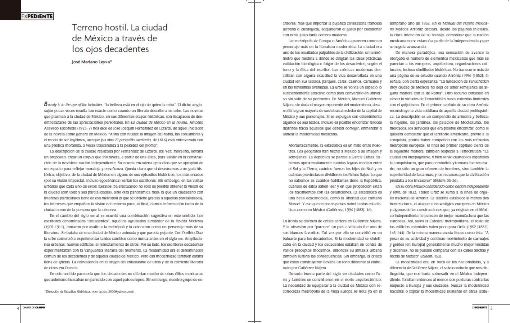Hostile terrain. Mexico City through the eyes decadent
Abstract
At the turn of the nineteenth and twentieth centuries occurred combination suggestive in this regard. The "decadent" writers called those clustered around the Revista Moderna (1902-1911), took by assault the metropolis and placed as a character in literature. It was a lively Mexico City and seemed strong. Porfirio Díaz the city began to experience many changes as never before in the nineteenth century. Urban extensions, new buildings, the renovation of others. For its part, the decadent writers were experimenting with the literary vanguard of time. Modernity was the common denominator of the decadent and this city of Mexico. But this modernity was also full of cracks. The coincidence of the origin of the enthusiasm of some and the literary movement of others was France.Downloads
Download data is not yet available.

Downloads
Published
2014-10-01
How to Cite
Leyva, J. M. (2014). Hostile terrain. Mexico City through the eyes decadent. Diario De Campo, (13), 4–8. Retrieved from https://revistas.inah.gob.mx/index.php/diariodecampo/article/view/854
Issue
Section
Expediente







